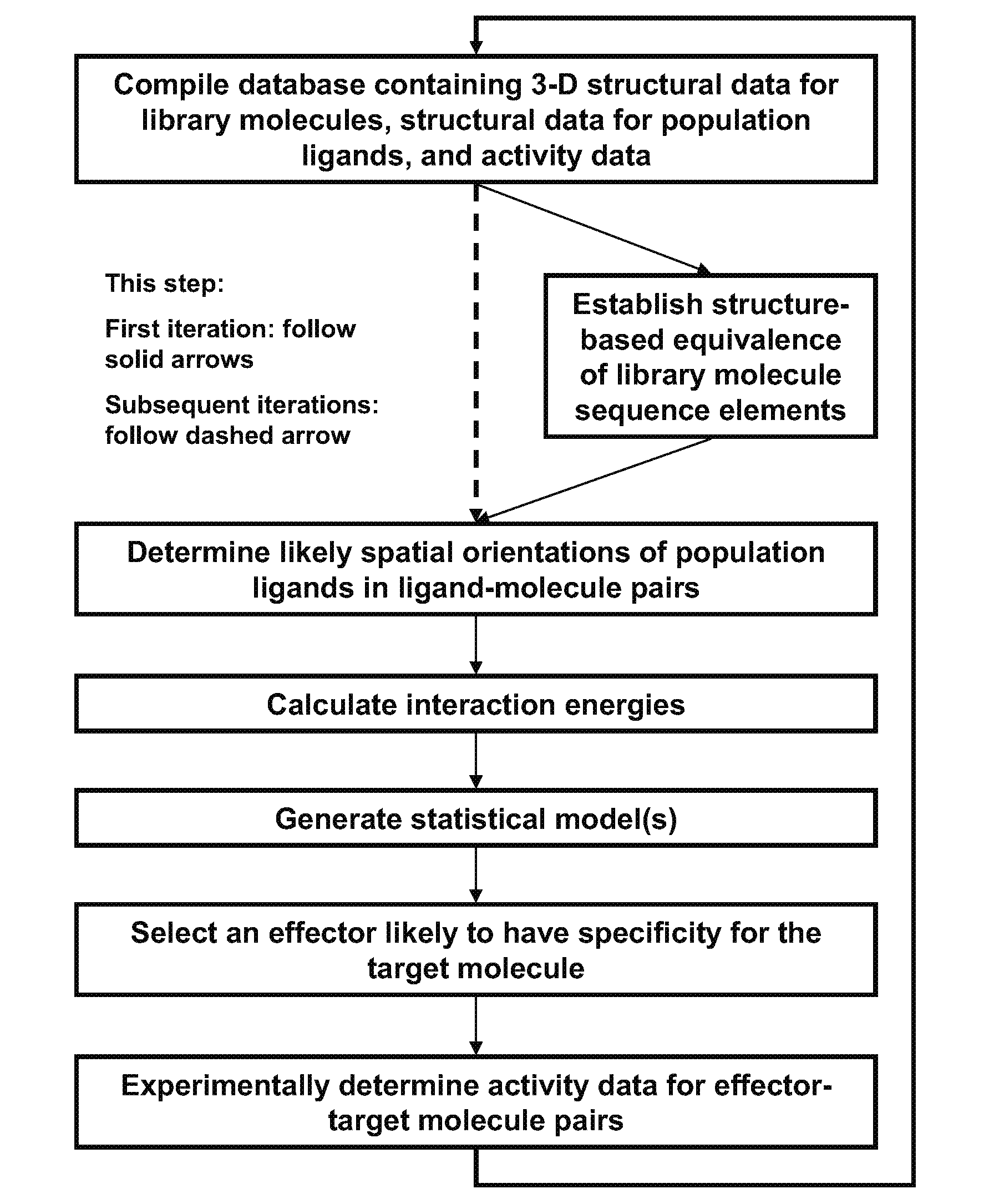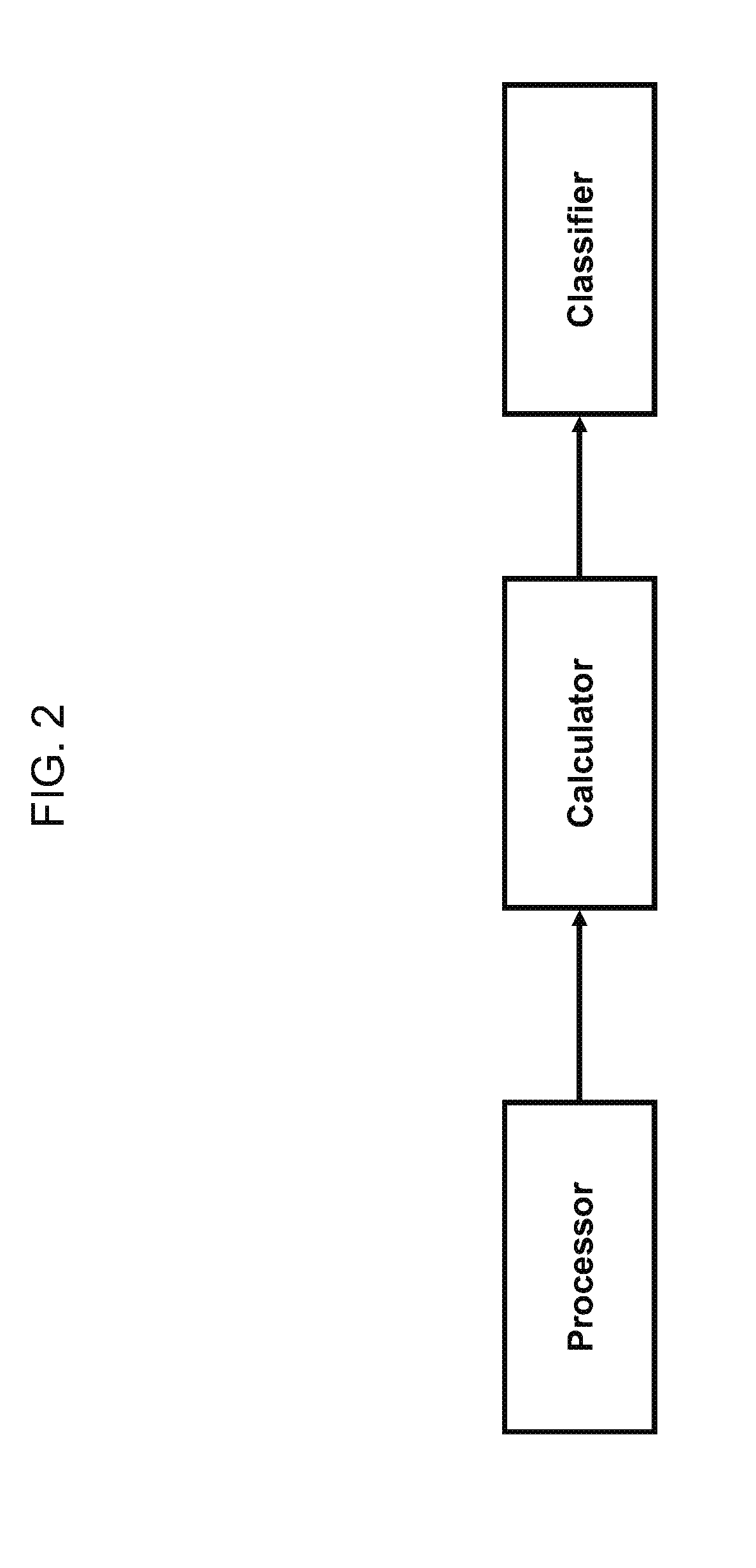Structure-based modeling and target-selectivity prediction
a structure-based modeling and target-selectivity technology, applied in the direction of molecular structures, instruments, library screening, etc., can solve the problems of drug side effects that show some adverse effects, limited specificity optimization, and limited molecular recognition in biological systems
- Summary
- Abstract
- Description
- Claims
- Application Information
AI Technical Summary
Benefits of technology
Problems solved by technology
Method used
Image
Examples
embodiment 1
[0111]A computational method for selecting an effector having specificity for a target molecule, the method comprising:[0112]a. compiling a database containing (i) three-dimensional structural data for members of a library of molecules each having a known chemical sequence comprising sequence elements, the library comprising the target molecule and other member molecules structurally related to the target molecule, (ii) structural data for members of a population of ligands each having a known chemical structure, and (iii) activity data quantifying an effect of ligand population members upon the activity of molecule library members wherein the ligands of the ligand-molecule pairs are selected from the ligand population members, the molecules of the ligand-molecule pairs are selected from the molecule library members and different ligand-molecule pairs in the set comprise a different ligand, a different molecule, or both a different ligand and a different molecule relative to other l...
embodiment 2
[0120]The method of claim 1, wherein the effector is an inhibitor of the target molecule.
embodiment 3
[0121]The method of embodiment 1, wherein the effector is an activator of the target molecule.
PUM
 Login to View More
Login to View More Abstract
Description
Claims
Application Information
 Login to View More
Login to View More - R&D
- Intellectual Property
- Life Sciences
- Materials
- Tech Scout
- Unparalleled Data Quality
- Higher Quality Content
- 60% Fewer Hallucinations
Browse by: Latest US Patents, China's latest patents, Technical Efficacy Thesaurus, Application Domain, Technology Topic, Popular Technical Reports.
© 2025 PatSnap. All rights reserved.Legal|Privacy policy|Modern Slavery Act Transparency Statement|Sitemap|About US| Contact US: help@patsnap.com



